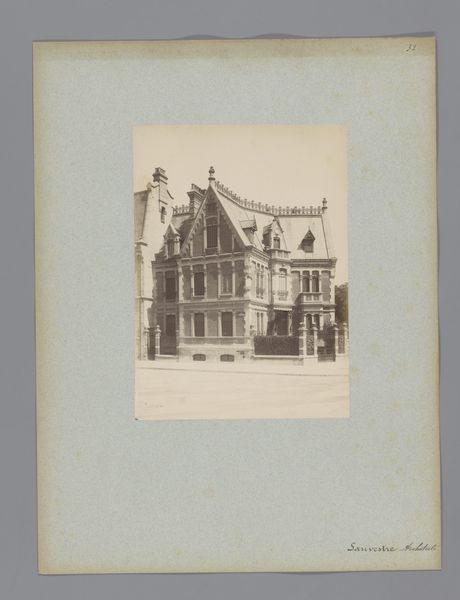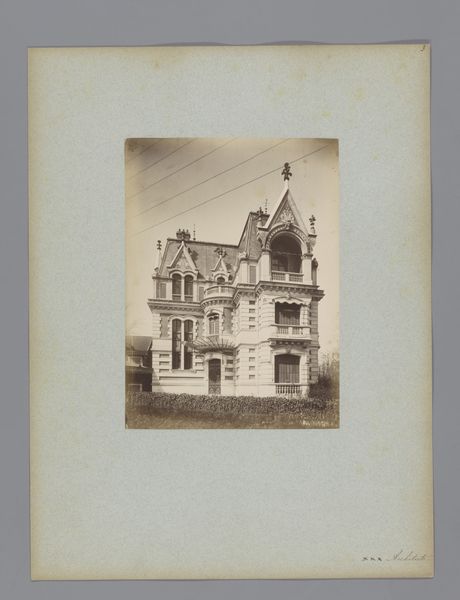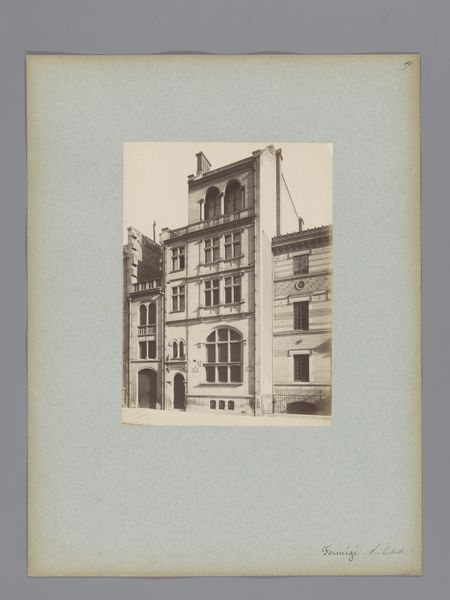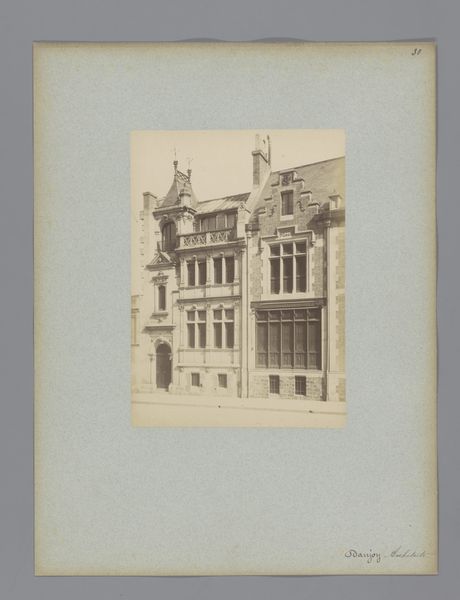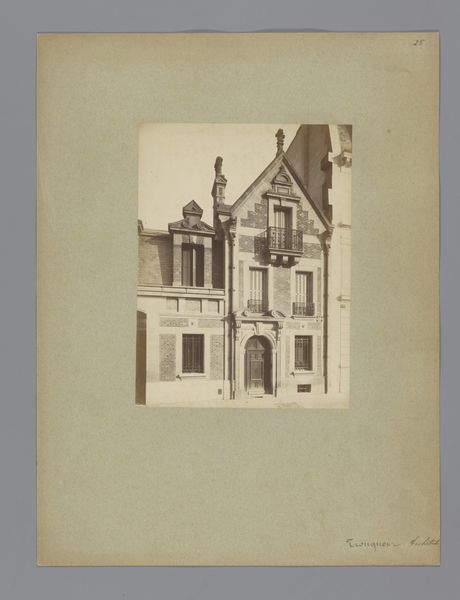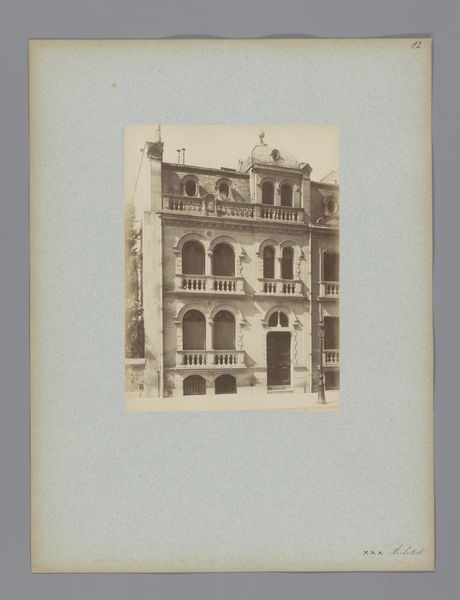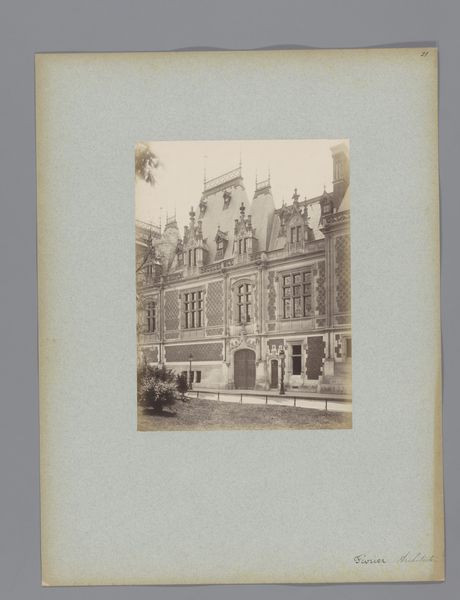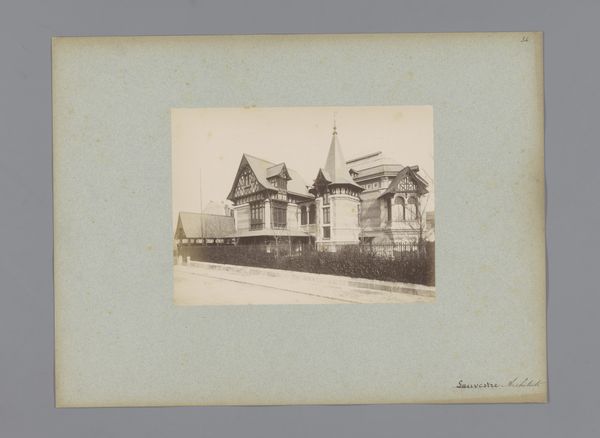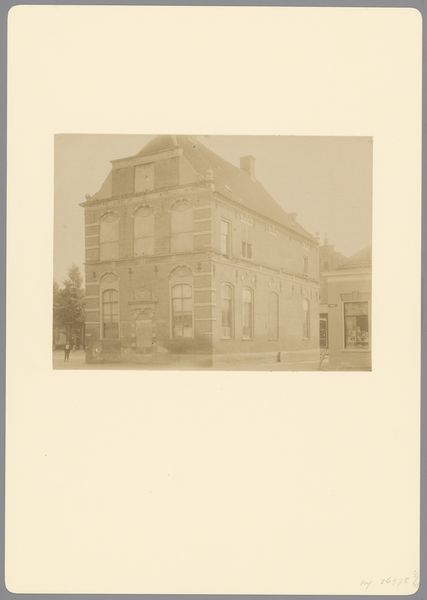
photography, architecture
#
aged paper
#
homemade paper
#
paper non-digital material
#
pale palette
#
flat design on paper
#
light coloured
#
personal journal design
#
photography
#
folded paper
#
cityscape
#
paper medium
#
design on paper
#
architecture
Dimensions: height 219 mm, width 165 mm
Copyright: Rijks Museum: Open Domain
Curator: Here we have an intriguing photograph titled "Villa in Paris, ontworpen door Gaston Aubry," dating from before 1880, its origins credited to Lampué et Cie. Editor: My immediate impression is of a quiet dignity. It has this rather stoic and melancholic quality; a relic of a time when permanence was an explicit project. Curator: Indeed. Notice the composition; it embodies both grandeur and isolation, doesn't it? Brick layered meticulously in stripes to form a rather solid structure with details that seem like gothic echoes of castles long past. The home radiates prosperity. How might such symbols resonate with a Parisian of that time? Editor: One has to ask, where did they get these materials, who made them, and what was the bricklayer’s daily existence while constructing this Villa? These materials weren’t simply chosen but rather extracted, transported, formed, and laid; their very being reflects human labor. That's absent from the photographic representation. Curator: I agree it is easy to miss the human hand present, however, to look beyond its aesthetic. This image holds something about domesticity during this period. Do you see those dark windows? Editor: Yes. And it gives a rather ghostly ambiance. The sepia-toned photography and the aged paper remind me how the processes used to document often influence the feelings associated with the memory of it. Curator: The photograph, itself as an artifact, brings up something compelling about mortality. Think about it, capturing light and shadow, preserving that moment in time. The home is no doubt still standing, but the era depicted, is that really lost forever? Editor: Perhaps not lost forever, but selectively remembered. Consider what stories such a villa could whisper of class, labor, and the grand transformations Paris was undergoing, reshaping not just its landscape, but also the lives of those who inhabited and constructed it. It's as much a story of Parisian aspirations as it is one of material realities. Curator: It leaves me considering the nature of design, progress, and permanence. Editor: Absolutely. The photograph reveals the layered histories embedded in a seemingly simple building. It invites reflection on what it takes to build and to immortalize through images.
Comments
No comments
Be the first to comment and join the conversation on the ultimate creative platform.
